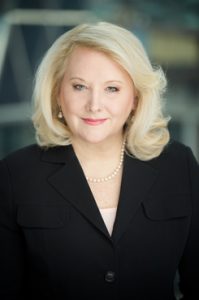Why Are More Late-Career Laterals Leaving the Only Firm They've Ever Known?
After decades at one firm, lawyers who might once have stayed for life are now on the move in search of new opportunities and a prolonged practice.
February 10, 2020 at 05:00 AM
7 minute read
 Image: Shutterstock
Image: Shutterstock
After 30 years, Dori Hanswirth knew the relationship was over.
She had been through two mergers in her time at the firm, which was called Squadron, Ellenoff, Plesent & Sheinfeld when she joined fresh off a federal clerkship in 1987. By 2010 it had become Hogan Lovells, and she eventually started thinking there might be better places to grow her practice and develop new relationships.
"There came a point that I thought I wouldn't choose to work at the place my former firm had become," she said.
Her ultimate decision to join Arnold & Porter Kaye Scholer in January 2018 as a litigation partner was years in the making, but the turning point came when she was asked to go on a recruiting trip to pitch Hogan Lovells to recent law school graduates and realized she wasn't eager to talk about the firm.
"I thought, if I can't be excited to talk about it, maybe I shouldn't be working there," Hanswirth says.
She says she was spurred by a shrinking New York office, changes in management and direction at Hogan Lovells and the idea that she might find a better home—for herself and for a younger partner she had mentored and hoped to see thrive.
Fueled by slowly separating partnerships, mandatory retirement and the desire to write one last successful chapter in a storied career, more and more partners like Hanswirth are becoming late-career laterals and leaving the only firms they've ever known after decades in the same place.
 Dori Hanswirth
Dori Hanswirth"These relationships, they are a lot like marriages," Keith Wetmore, a former managing partner at Morrison & Foerster who is now a recruiter with Major, Lindsey & Africa in San Francisco, says. "Just like couples can grow apart, so can law firm partnerships. It isn't necessarily a sudden thing, and it can also be a perfectly rational thing to do."
For many, like Leonard Bernstein, who left Reed Smith in June 2018 after more than 25 years to become a partner at Holland & Knight and co-chair of its financial services regulatory group in Philadelphia, a lateral move is an opportunity to reinvigorate a practice.
"I've run into many colleagues at my experience level or age that have looked at their careers and thought, 'Do I have room for one more energizing change or adventure?'" Bernstein says.
In conversations with several attorneys who spent 20 or more years at one firm only to lateral to another toward their career's end, the reasons varied, but there were several common themes, including the wish to try something new, the desire to keep practicing and the chance to build something again. But none listed money as a primary driver.
"It's hardly ever an issue about more money," Larry Watanabe, founder of legal recruiting firm Watanabe, Nason & Schwartz, says.
Watanabe has been in the legal recruiting industry since 1998 and seen a trend over the past five years or so that suggests making a late-career move is only going to become more common. He estimates that around one-third of all Big Law firms have some sort of mandatory retirement age, which can spur an attorney in their early- to mid-60s to start looking for opportunities to keep working, even if it means leaving their longtime home.
"Firms are drawing tighter lines around retirement," Watanabe says. "Lawyers can be productive into their 60s and 70s."
Richard Scheff, a partner and leader in the Philadelphia office of Armstrong Teasdale, is one of those attorneys. A trial lawyer, he was in a leadership position at his former firm, Montgomery McCracken Walker & Rhoads, for almost 30 years before moving over to Armstrong in September 2018.
"People are working longer," Scheff says. "Firms need to realize that after having worked for 30-plus years and developing those relationships, they aren't going anywhere."
Scheff's move didn't come without trepidation, though.
"For anyone to say they have been at a firm for 25 years and don't have some level of angst over moving to another firm just isn't being truthful," Scheff says. "I can't speak for others, but I put a lot of time, effort and resources in and had success there. I did think I was going to ride out my career there and enjoy another 10 years."
 Leonard Bernstein
Leonard BernsteinScheff says he is a high-energy person who feeds on constant movement. When he realized that Montgomery McCracken's growth trajectory was going to be slower than he would have liked, he started exploring his options.
"The transition has been phenomenal," he says. "I have been fortunate to find a home that really is tremendous and really supportive of the practice. There are cases where there are not always greener pastures."
A firm's strategic direction is often the impetus for a partner's decision to seek change, Wetmore says. He offers an example from his tenure as managing partner at Morrison & Foerster, when the firm decided to reallocate resources away from one practice area and toward another.
"We chose not to grow our trusts and estates practice, so the attorneys left," Wetmore says. "They had between 25 and 30 years at the firm. So we threw them a party. One of them was my personal trusts and estates lawyer. Most people will be adults about it."
Other times, Wetmore says, it does come down to age.
"Firms that have a really institutionalized client base, they have to ask themselves, 'Are these attorneys in their 60s better lawyers than the ones in their 30s?'" he says.
Wetmore agrees with Watanabe that roughly two-thirds of firms have a flexible retirement program at this point, and finding a firm with one can be an important part of an older attorney's search for a new home after so many years.
As for those attorneys who find themselves considering a late-career move, proper planning is critical.
"I tell them, if you want to do this," Watanabe says, "do it when you are 60 or 62. If you wait longer or your practice starts to decline, you're screwed."
On top of a changing work life brought upon by a lateral move, Bernstein says lawyers considering such a decision also need to be prepared for a psychological adjustment.
"Change, by definition, can be scary and intimidating," he says. "For me, as a people person, having mentored dozens and dozens of people over the decades, change is difficult. Change means not working with them anymore, and for me that was and still is challenging."
The consensus among recruiters and late-career laterals is that the growing prevalence of moves like those made by Scheff, Hanswirth and Bernstein is a sign of things to come. Even for those who ultimately decide not to make a move, staying open to the possibility can be rewarding, they say.
"There is no harm in exploring change and considering something," Scheff says. "If you are reasonably successful and like the people around you, there is no reason to change. But life is all about transition and managing transition and exploring. Don't close your eyes to it."
Email: [email protected]
This content has been archived. It is available through our partners, LexisNexis® and Bloomberg Law.
To view this content, please continue to their sites.
Not a Lexis Subscriber?
Subscribe Now
Not a Bloomberg Law Subscriber?
Subscribe Now
NOT FOR REPRINT
© 2025 ALM Global, LLC, All Rights Reserved. Request academic re-use from www.copyright.com. All other uses, submit a request to [email protected]. For more information visit Asset & Logo Licensing.
You Might Like
View All
Law Firms Look to Gen Z for AI Skills, as 'Data Becomes the Oil of Legal'

Law Firms Expand Scope of Immigration Expertise Amid Blitz of Trump Orders
6 minute read
Losses Mount at Morris Manning, but Departing Ex-Chair Stays Bullish About His Old Firm's Future
5 minute read
Law Firms Mentioned
Trending Stories
- 1Uber Files RICO Suit Against Plaintiff-Side Firms Alleging Fraudulent Injury Claims
- 2The Law Firm Disrupted: Scrutinizing the Elephant More Than the Mouse
- 3Inherent Diminished Value Damages Unavailable to 3rd-Party Claimants, Court Says
- 4Pa. Defense Firm Sued by Client Over Ex-Eagles Player's $43.5M Med Mal Win
- 5Losses Mount at Morris Manning, but Departing Ex-Chair Stays Bullish About His Old Firm's Future
Who Got The Work
J. Brugh Lower of Gibbons has entered an appearance for industrial equipment supplier Devco Corporation in a pending trademark infringement lawsuit. The suit, accusing the defendant of selling knock-off Graco products, was filed Dec. 18 in New Jersey District Court by Rivkin Radler on behalf of Graco Inc. and Graco Minnesota. The case, assigned to U.S. District Judge Zahid N. Quraishi, is 3:24-cv-11294, Graco Inc. et al v. Devco Corporation.
Who Got The Work
Rebecca Maller-Stein and Kent A. Yalowitz of Arnold & Porter Kaye Scholer have entered their appearances for Hanaco Venture Capital and its executives, Lior Prosor and David Frankel, in a pending securities lawsuit. The action, filed on Dec. 24 in New York Southern District Court by Zell, Aron & Co. on behalf of Goldeneye Advisors, accuses the defendants of negligently and fraudulently managing the plaintiff's $1 million investment. The case, assigned to U.S. District Judge Vernon S. Broderick, is 1:24-cv-09918, Goldeneye Advisors, LLC v. Hanaco Venture Capital, Ltd. et al.
Who Got The Work
Attorneys from A&O Shearman has stepped in as defense counsel for Toronto-Dominion Bank and other defendants in a pending securities class action. The suit, filed Dec. 11 in New York Southern District Court by Bleichmar Fonti & Auld, accuses the defendants of concealing the bank's 'pervasive' deficiencies in regards to its compliance with the Bank Secrecy Act and the quality of its anti-money laundering controls. The case, assigned to U.S. District Judge Arun Subramanian, is 1:24-cv-09445, Gonzalez v. The Toronto-Dominion Bank et al.
Who Got The Work
Crown Castle International, a Pennsylvania company providing shared communications infrastructure, has turned to Luke D. Wolf of Gordon Rees Scully Mansukhani to fend off a pending breach-of-contract lawsuit. The court action, filed Nov. 25 in Michigan Eastern District Court by Hooper Hathaway PC on behalf of The Town Residences LLC, accuses Crown Castle of failing to transfer approximately $30,000 in utility payments from T-Mobile in breach of a roof-top lease and assignment agreement. The case, assigned to U.S. District Judge Susan K. Declercq, is 2:24-cv-13131, The Town Residences LLC v. T-Mobile US, Inc. et al.
Who Got The Work
Wilfred P. Coronato and Daniel M. Schwartz of McCarter & English have stepped in as defense counsel to Electrolux Home Products Inc. in a pending product liability lawsuit. The court action, filed Nov. 26 in New York Eastern District Court by Poulos Lopiccolo PC and Nagel Rice LLP on behalf of David Stern, alleges that the defendant's refrigerators’ drawers and shelving repeatedly break and fall apart within months after purchase. The case, assigned to U.S. District Judge Joan M. Azrack, is 2:24-cv-08204, Stern v. Electrolux Home Products, Inc.
Featured Firms
Law Offices of Gary Martin Hays & Associates, P.C.
(470) 294-1674
Law Offices of Mark E. Salomone
(857) 444-6468
Smith & Hassler
(713) 739-1250










